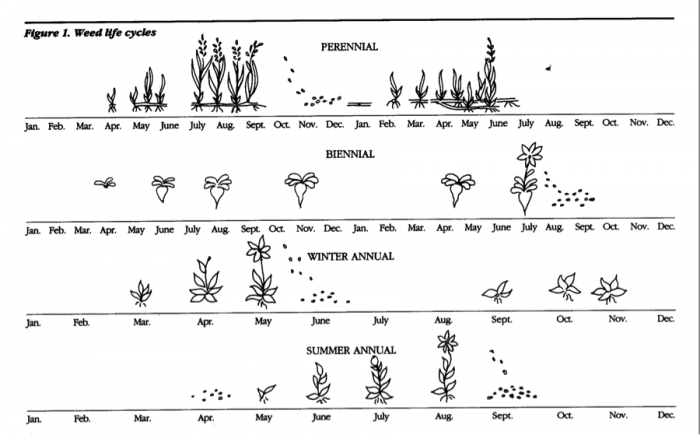Crop Life Cycles and Environments
Annual plants are typically cultivated in high-resource environments and regions with:
-
climates that have sufficient precipitation and temperatures for plants to complete their life cycle each year
- soils that soils tend to be relatively flat and well-drained, and are not prone to erosion when they are tilled or planted to an annual crop each year
- high fertility soil
Annual crops produce grain and fruit crops within one growing season. Grain crops are typically a concentrated source of carbohydrates, protein, and sometimes fat, that can be cost-effectively stored and transported long distances, enhancing their market options and utility. Grain and oilseed annual crops are often processed for multiple uses and markets. For instance, oil is extracted from soybean for industrial and human uses, and the remaining meal is high in protein that is used for both human food products and livestock feed.
If conditions are not ideal for annual crops, farmers sometimes use management practices or technologies to improve conditions for crop growth such as irrigation to compensate for the lack of precipitation or black plastic to warm the soil in environments where temperatures may limit plant growth.
Regions, where perennial crops dominate the landscape, tend to have soil or climatic limitations such as steep or hilly slopes that are prone to erosion, shallow or poorly drained soils, soil nutrient limitations; limited precipitation and soil moisture availability, short growing seasons, or temperatures outside of optimal plant growth temperatures. In these environments, farmers may produce annual crops that are adapted to the environment, such as spring or winter wheat that grow during the cooler season or drought-tolerant annuals such as sorghum and pearl millet. Or farmers may use technologies and management practices, particularly for high-value crops, to improve conditions for crop growth such as tile drains, irrigation or season extension technologies.
See illustration and comparison of plant life cycles, the time and forms of reproduction. Can you name a specific crop plant example for each type of plant life cycle?

